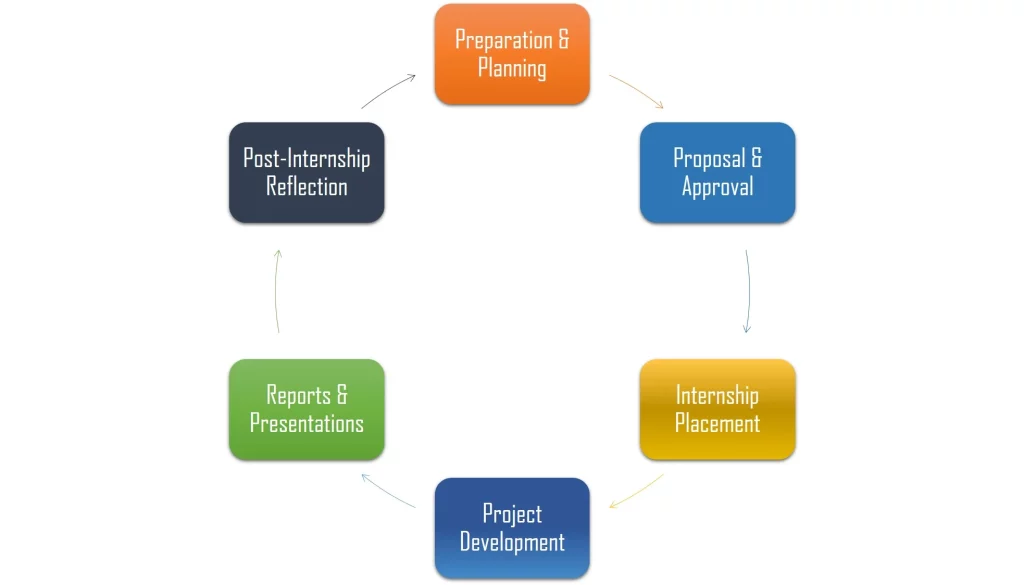Basics
Types
Sample Capstone Projects

A capstone project internship option refers to a type of capstone project that involves integrating practical work experience, typically in the form of an internship, with academic learning and research. In this option, students undertake a structured internship related to their field of study, and the insights and experiences gained during the internship inform and contribute to their capstone project.
Capstone Project Internship: Process
- Preparation and Planning:
- Internship Application and Approval:
- Placement and Orientation:
- Internship Experience:
- Integration with Capstone Project:
- Capstone Project Development:
- Presentations and Reports:
- Feedback and Evaluation:
- Documentation and Submission:
- Post-Internship Reflection:
It’s important to note that the specific steps and requirements can vary based on the academic institution and program. Students should adhere to the guidelines provided by their institutions and maintain effective communication with both academic and industry mentors throughout the process.
The Capstone Internship Problem Statement
- Brief Description of the Topic of the Hypothesis: i.e. The focus of this internship project revolves around [Brief Description of the Topic], exploring key aspects related to [Provide Additional Context].
- Description of the Hypothesis: i.e. The central hypothesis under investigation posits that [Articulate the Hypothesis]. To test this hypothesis, the internship will employ [Specify Research Methods or Approaches], anticipating [Brief Overview of Likely Outcomes].
- Description of the Internship:
- Organization: i.e. The internship is hosted by [Name of the Organization], a [Brief Description of the Organization, e.g., non-profit, tech company, healthcare provider] located in [Location]. The overarching goals of the organization include [Brief Overview of Organizational Goals].
- Internship Advisor: i.e. The dedicated internship advisor for this project is [Name of the Advisor], whose role encompasses [Job Description, including areas of expertise and responsibilities].
- Internship Duties: i.e.
- Types of Tasks:
- Conducting [Specify Types of Tasks, e.g., data analysis, market research, project coordination].
- Collaborating with [Stakeholders Involved, e.g., internal teams, clients].
- Contributing to [Any Specific Projects or Initiatives Relevant to the Hypothesis].
- Time Commitment:
- The internship requires a total time commitment of [Specify Duration, e.g., 10 weeks].
- The weekly time commitment is approximately [Specify Hours per Week], allowing for immersive engagement and in-depth exploration.
- Types of Tasks:
- References i.e. in APA, MLA etc.
The Capstone Internship Proposal
What should you include in an internship proposal?
The format of an internship proposal may vary depending on the specific requirements of your academic institution or the expectations of the internship provider. However, a typical internship proposal generally includes the following components:
- Title Page:
- Introduction:
- Background:
- Hypothesis: Clearly state any hypotheses or expectations related to the outcomes of the internship and capstone project.
- Specific Context:
- Significance:
- Literature Review:
- Project Methodology:
- Data Collection Methods:
- Type and Quantity of Data:
- Data Analysis Methods:
- Project Schedule:
- Expected Outcomes:
- References:
- Appendix (if applicable): Attach any additional documents such as your resume, letter of agreement from the internship site, or other relevant materials.
Remember to check with your academic institution for specific formatting guidelines, as different programs or departments may have variations in their requirements for internship proposals.
